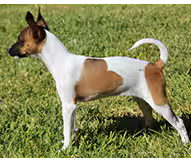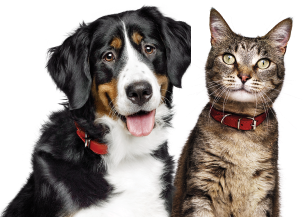These dogs are super intelligent, alert little livewires. If bored, under exercised or left alone too long they can become destructive and noisy. They also fancy themselves as pack leaders and without firm guidance they can be bossy, stubborn, impulsive and intense. If their guarding instincts take over they can also be unfriendly to other dogs, children and strangers; snapping and nipping to show dominance.
For the reasons above it’s essential to provide firm ongoing training/socialisation with positive reinforcement. This will encourage a fun-loving, affectionate pup that will fall in line with your commands. They can even become subdued and snuggly after a bout of exercise.
These dogs are OK in apartments (with daily exercise) but would prefer a well-fenced yard they can patrol… and dig up. Don’t expect them to be quiet either – although good consistent training can curb their barking. And if you have smaller pets? We suggest another dog breed.
Recommended Diet:
Even though the Tenterfield Terrier is considered one of Australia’s very own dogs, it was brought over in the 1800s by English settlers to kill mice, rats, rabbits and other ‘vermin’ on properties.
Its bloodline is a mix of Standard Fox Terrier, Manchester Terrier, Toy Terrier, a bit of Whippet and even some Chihuahua. Australian farmers developed the breed even further – giving us the Tenterfield Terrier we have today.
This dog is quite a different to its forbearers, even though it was long considered a Mini Fox Terrier (or Foxy). It wasn’t until the 1990s when an Australian Terrier club instigated a name change to avoid the confusion. The ‘Tenterfield Terrier’ was chosen (by gardening celebrity, Don Burke) to commemorate the Tenterfield Saddler, George Woolnough – a keen enthusiast of the breed. George was also grandfather to Australian entertainer, Peter Allen, who immortalised the man through song.
Health Concerns:
The Tenterfield Terrier, as with many other terrier types, are considered to be a generally healthy dog breed. Yet, seeking out a breeder who can provide you a history of their breed lines along with comprehensive health checks will give you the best chance of finding out about any potential genetic issues.
Some health concerns to be aware of with this breed include:
- Patellar Luxation – misaligned kneecap (patella) dislocates or moves out of its normal position, causing lameness and discomfort for the dog. Surgical intervention may be necessary in more severe cases.
- Hypothyroidism: hormone imbalance causing insufficient thyroid levels. Possible signs include: thinning coat, lethargy, weight issues, slow heart rate and changes in behaviour, such as dullness.
- Legg-Calve-Perthes Disease: a degenerative condition that affects the hip joint of the dog. It occurs when the blood supply to the femoral head (the top of the thigh bone) is disrupted, leading to the degeneration of the bone and joint.
- Eye Problems: Some Tenterfield Terriers may be susceptible to certain eye conditions, including cataracts, progressive retinal atrophy (PRA), and distichiasis (abnormal eyelash growth). Regular eye examinations by a veterinarian can help detect and address any potential issues.
Additionally, regular vet check-ups, a balanced healthy diet, and proper exercise will help to maintain overall health and wellbeing of your dog.
It is advised that any prospective pet parents are aware of potential health challenges faced with this breed and that you do your own research before ownership.























